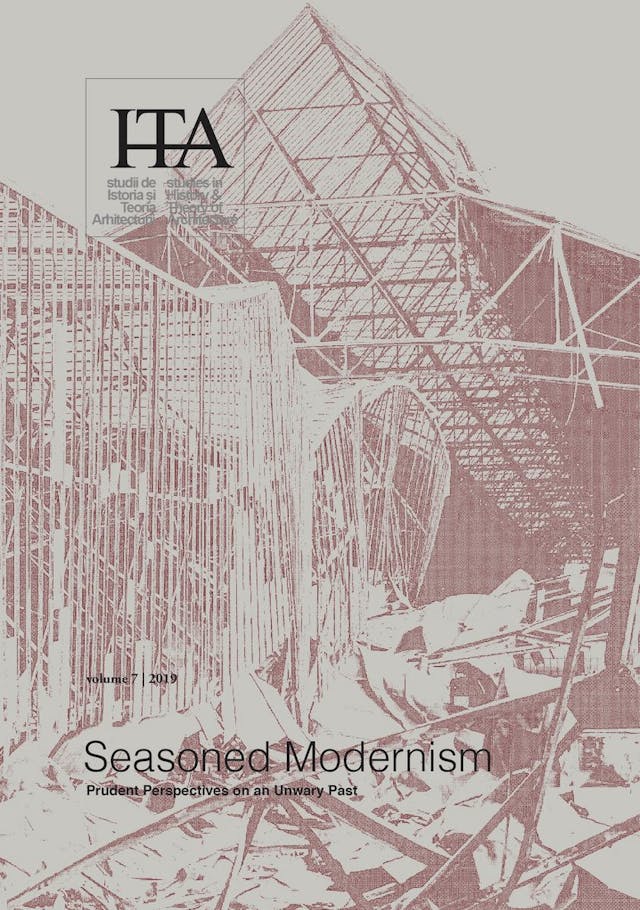... Modernism survived on the dream of austerity and the dream of not playing the game of consumerismA conversation with Stanislaus von Moos on the rooftop terrace of the Getty Research Institute
... Modernism survived on the dream of austerity and the dream of not playing the game of consumerism
A conversation with Stanislaus von Moos on the rooftop terrace of the Getty Research Institute
by
Celia Ghyka
&
Stanislaus von Moos
Stanislaus von Moos is one of the most distinguished and exceptional architectural historians of the last decades. Trained as an art historian and having worked closely with Sigfried Giedion, he is also the scholar to whom we owe the very first posthumous assessment of Le Corbusier’s entire work,1 in his 1968 book “Le Corbusier. Elements of a Synthesis.”2As the interview will suggest, his research interests vary from the study of interwar housing to the work of Venturi & Scott Brown to scholarship on recent Swiss architecture.
In 1971 he founded and was the first editor of the Swiss journal Archithese, a vibrant forum for architectural debate and critique.
Besides his prolific and momentous work as a writer of the architectural history of the 20th century, he has been teaching in various prestigious institutions, such as the Yale School of Architecture, Princeton University, Harvard University, Technische Hogeschool, Delft, the Academy of Architecture in Mendrisio. He is a Professor Emeritus of History of Art at the University of Zürich.
I had the great honor and joy to meet professor von Moos during the winter semester 2018/2019 at the Getty Research Institute (GRI) in Los Angeles, where we were both working around the topic of Monumentality. An incredibly generous and genuinely inquisitive person, he accepted to have a conversation for this year’s issue of our journal.
While I was consulting the Aldo Rossi archives in the special collections of the GRI, I found a photograph showing Aldo Rossi, Stanislaus von Moos and Heinrich Klotz, concentrated around a table that was visibly a conference table. This photograph triggered our conversation, around that conference from September 1974 - a symposium actually that took place at the IDZ (International Design Center) - Berlin, under the title “Das Pathos des Funktionalismus” (The Pathos of Functionalism).
The symposium gathered architects, art historians and even sociologists and called for a discussion for “architecture as form as opposed to the pure sociological critique which tends to disqualify aesthetic experience of architecture as an offence to critical awareness and social concern” (as stated in the magazine werk. archithese from March 1977, dedicated to the event). Organized by professor Heinrich Klotz, who was also a contributor, speakers such as Julius Posener, Aldo Rossi, Adolf Max Vogt, Robert Venturi, Denise Scott Brown, and of course Stanislaus von Moos participated at the conference.
This is the transcript of our conversation, at some point interrupted by the noise of too many helicopters flying over the Getty mountain.
1 As we know, Le Corbusier had been extremely adamant in controlling the image of his work. Von Moos’ book remains one of the most pertinent scholarship works on the subject, although the opening of the Le Corbusier’s archives in Paris was followed by an avalanche of studies on the topic.
2 First published in German in 1968, then translated into English in 1979 for the first English edition at the MIT. Recently reprinted by the Berlage Institute in 2009, with postscripts for every chapter.
Published in

Chicago citation style
DOI:
10.54508/sITA.7.02
1 / 2013
Around a Fortunate Series of Publications and Events3 / 2015
Urbanity and Civil Society. The Rise of a New Urban Generation in Bucharest during the 2000s5 / 2017
Re-opening the Museum of Contemporary Art in Belgrade. Notes on Non-alignment and the Canonical6 / 2018
Reverse-engineering Political Architecture. The House of the People and Its Hidden Social Effects7 / 2019
A conversation with Stanislaus von Moos on the rooftop terrace of the Getty Research Institute8 / 2020
Beatriz Colomina. X-RAY Architecture10 / 2022
Fleeting Moments, Floating Monuments. Ritual Machines of Performativity: Reading Ptolemy Philadelphus and Aldo Rossi11 / 2023
Of Specters and Phantasms: an Introduction11 / 2023
Ruins That Speak: Ageing Bodies, Collapsing Cities. An interview with Salvatore Settis